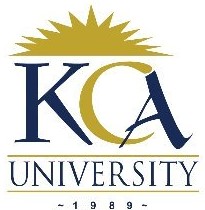 UNIVERSITY EXAMINATIONS: 2014/2015
UNIVERSITY EXAMINATIONS: 2014/2015
ORDINARY EXAMINATION FOR THE BACHELOR OF SCIENCE
IN INFORMATION TECHNOLOGY
BIT 3107 WIRELESS NETWORKS TECHNOLOGIES
DATE: APRIL, 2015 TIME: 2 HOURS
INSTRUCTIONS: Answer Question ONE and any other TWO
QUESTION ONE
a) Fill the table below showing the comparison of Bluetooth, infrared and Wireless LAN
of IEEE 802.11b. (6 Marks)

Ideal Application Data rates (Mbps)
Infrared
Bluetooth
IEEE 802.11b
b) Describe briefly the six major transmission functions that are required in long
range communications. (6 Marks)
c) With the aid of simple diagrams, sketch and show the minimum distance between
the centers of the cells that use the same frequency in the following cases:
(i) frequency re-use for 4-cell re-use pattern (4 Marks)
(ii) frequency re-use for 7-cell re-use pattern (4 Marks)
d) Briefly describe the following types of noise in data communications:
(i) Thermal noise (2 Marks)
(ii) Inter-modulation Noise (2 Marks)
(iii) Crosstalk (2 Marks)
e) In reality, it is often the case that serial links can be clocked considerably faster
than parallel links, and they achieve a higher data rate, because of two factors that
affect parallel communications: clock skew and crosstalk interference. Discuss
how this is possible. (4 Marks)
QUESTION TWO
a) Compare and contrast FDMA and TDMA. (6 Marks)
b) Describe the association process (active process) which a mobile client uses to
connect to a wireless Access Point. (6 Marks)
c) Discuss the three major transmission impairments experienced by signals.
(6 Marks)
d) Differentiate between connection oriented and connectionless services.
( 2 Marks)
QUESTION THREE
a) The 802.11 standard states that each conformant wireless LAN must provide nine
services. These services are divided into two categories: five distribution services
and four station services. The distribution services relate to managing ce11
membership and interacting with stations outside the cell. In contrast, the station
services relate to activity within a single cell and deal with station mobility as
they enter and leave cells, attaching themselves to and detach themselves from
base stations.
(i) Describe each of the five distribution services. (5 Marks)
(ii) Describe each of the four station services. (4 Marks)
b) State four rules that apply data transmission over radio waves. (4 Marks)
c) Explain the concept of data rate shifting as used in IEEE 802.11b wireless LAN
standard. (4 Marks)
d) Describe briefly the following IEEE standards:
(i) 802.11d (1 Mark)
(ii) 802.11e (1 Mark)
(iii) 802.11h (1 Mark)
QUESTION FOUR
a) (i) If the time required for the completion of one sine wave is 0.1 s, what is
the frequency of the wave? If the wave’s period is reduced to 0.05 s, what
is its new frequency? (2 Marks)
(ii) A channel has a spectrum between 6 MHz and 7 MHz; SNRdB = 24 dB.
Calculate the channel capacity. (4 Marks)
b) Discuss the importance of segmenting messages before transmission. (5 Marks)
c) Describe the categorization of:
(i) Communication satellites (3 marks)
(ii) Satellite orbits (3 Marks)
d) State three LEO satellite characteristics. (3 Marks)
QUESTION FIVE
a) Explain the importance of standards and describe the role of ITU with regard to
telecommunications in the world today. (7 Marks)
b) Despite the great promise, what are the key limitations associated with wireless
systems? (4 Marks)
c) Explain briefly any four basic components of a VoIP network. (4 Marks)
d) Identify THREE significant strengths that wireless communications systems have
over their wired counterparts. (3 Marks)
e) Wireless LANs can accommodate various network topologies. The standard
defines a BSS as a group of stations that communicate with each other. In this
regard, discuss briefly the Basic Service Set (BSS). (2 Marks)
